New Chromatography Columns and Accessories at Pittcon 2012, Part II
LCGC North America
What you need to know about gas chromatography columns, thin-layer chromatography plates, sample preparation products, as well as chromatography and sample preparation accessories (including small benchtop instruments) unveiled at Pittcon this year
Part II of our yearly report on new products introduced at Pittcon. This month, gas chromatography columns, thin-layer chromatography plates, sample preparation products, as well as chromatography and sample preparation accessories (including small benchtop instruments) are covered.
Pittcon 2012 (more formally known as the 63rd Pittsburgh Conference on Analytical Chemistry and Applied Spectroscopy) returned to the Orange County Convention Center in Orlando, Florida, March 11–15, 2012, after a one year absence. This year's event hosted 948 instrument manufacturers and laboratory suppliers in 1854 booths. In addition to attending the exposition, conferees listened to more than 2000 technical presentations (orals, posters, workshops, invited and contributed talks, and award symposia), checked on numerous company seminar rooms, or attended one of 95 short courses.
Although the average attendance has been shrinking over the last several years, undoubtedly, Pittcon still remains the most important yearly international analytical exhibition where companies introduce their latest instruments, instrument accessories, software, columns, sample preparation, and other consumable products. Because many past attendees have purchased one or more new products within three months after attending the show, most exhibitors attempt to maximize their booth traffic to meet as many potential customers as possible.
The purpose of this report is to provide information about many of the new separation consumables and accessory products that were displayed at Pittcon 2012. In some cases, products that were introduced during 2011 but after Pittcon 2011 (1,2) may be included for reasons of completeness. The information is based on manufacturers' responses to a questionnaire mailed in early 2012. Because of space limitations and the fact that some manufacturers did not respond to the questionnaire, this report cannot be considered an exhaustive listing of all new products that were introduced since last year's event in Atlanta. However, over the years, these Pittcon introduction summaries have provided a good source of information that would be difficult for one individual to gather during the four days of the exhibition. In addition, the products introduced have shown definite correlations to current research, development, and application activity in the separation sciences.
As in previous years, products recommended by their manufacturers primarily for biomolecule and biofluids sample preparation are denoted in the tables with the designation BIO. Some of these products may be used for general sample prep as well, but their main emphasis is for biological samples.
In this month's coverage, I will look at gas chromatography (GC) columns, thin-layer chromatography (TLC), sample preparation products and hardware, accessories, and small tabletop instruments, mainly for sample preparation.
Gas Chromatography Columns
Although GC is considered a relatively mature separation technique, new GC columns continue to be introduced each year at Pittcon (Table I). This year, we saw the introduction of eight new GC columns: seven wall-coated open tubular (WCOT) columns and one porous layer open tubular (PLOT) column. Columns were introduced by six different vendors. In addition, Agilent Technologies introduced an entire line of J&W packed columns for laboratories still using this technology. These columns are still accepted in many environmental and pharmaceutical applications.

Figure 1
Application-specific GC columns are always popular introductions at Pittcon. This year, a majority of the columns were for specific application areas. GC has found widespread usage in the petroleum industry. A single PLOT column was introduced by Restek for the trace-level analysis of volatiles in hydrocarbon streams, particularly for downstream products such as ethylene, propylene, the butylenes, and butadiene. Supelco/Sigma Aldrich also introduced a hydrocarbon processing industry (HPI) column for the analysis of benzene and other aromatics in gasoline, but the proprietary ionic, very polar liquid stationary phase also can be used for fatty acid methyl ester (FAME) profiles in biodiesel and edible oils. Ionic liquids are a new breed of GC phases that have higher temperature limits than typical coated or bonded GC phases. To illustrate the capability of this new type of phase, Figure 1 shows the separation of a standard 37-component FAME mix (Supelco/Sigma Aldrich) containing methyl esters of fatty acids ranging from C4 to C24, including key monounsaturated and polyunsaturated fatty acids. Although not shown, Supelco's standard column for FAME analysis has been a cyanopropyl siloxane phase (SP-2560) and it was compared with the SLB-IL 111 ionic liquid phase column. The newer SLB-IL 111 column gave a slightly better signal-to-noise ratio, had a reduction in analysis time because of weaker dispersive interactions, and showed stronger dipole-induced dipole interactions resulting in increased retention of polarizable analytes (those with double bonds) relative to nonpolarizable analytes. The higher the degree of unsaturation, the stronger the retention; thus, an alternative selectivity is noted with the SLB-IL 111 column relative to the SP-2560 cyanopropyl siloxane column.

Table I: Gas chromatography columns
The workhorse column in many GC and gas chromatography–mass spectrometry (GC–MS) laboratories is the 5% phenyl–95% polysiloxane phase. Three companies introduced a 5% phenyl column, but one of them has a polysilphenlene siloxane backbone that is said to increase the thermal stability and decrease column bleed. Also, Thermo Fisher Scientific's version was available in stainless steel metal configurations.
Thin-Layer Chromatography
TLC (and high performance TLC [HPTLC]) is a simple technique that many chromatographers overlook, even when they only need a cursory separation or purity check. Macherey-Nagel is one of the few companies that produces thin-layer products. They have expanded their Alugram Xtra line of TLC and HPTLC products to a wide variety of formats. The base product is unmodified standard silica layers on aluminum. The silica gel has a specific surface area of 500 m2 /g, a mean pore size of 60 Å, and a specific pore volume of 0.75 mL/g. The particle size is 5–17 µm. The binder holding the silica to the aluminum plate is a highly polymeric product so that the plate can be cut easily without flaking the silica. The layer is stable in almost all organic solvents including pure aqueous eluents. The HPTLC plate has a smaller particle size of 2–10 µm, which gives sharper separations, shorter developing times, and increased detection sensitivity compared to the regular TLC plates. The plates have an indicator of manganese-activated zinc silicate with green fluorescence of shortwave UV (254 nm). Special plates are available with a concentrating zone.
Sample Preparation Products
As indicated in Table II, Pittcon 2012 was another productive year with 19 new sample preparation products or families of products displayed. Not included in that count were sample preparation accessories (Table III), which will be covered later. The most popular application areas include various pollutants in environmental samples, drugs and drug metabolites in biological fluids, and toxins in food. Formats included cartridges, 96-well plates, and spin columns for use with a centrifuge as the driving force.
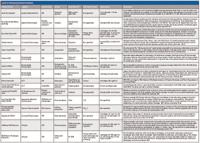
Table II: Sample preparation products
Many of the products were for solid-phase extraction (SPE) and just about every mode (reversed phase, strong or weak anion and cation exchange, adsorption and normal phase, partition, and mixed mode) was represented. A wide variety of media was introduced at Pittcon including polymer-based, graphitized carbon black, silica-based bonded phases, bare silica, alumina, titania, and diatomaceous earth.

Table II: Sample preparation products (continued)
The majority of the SPE products introduced at Pittcon 2012 were polymer-based.
Polymeric SPE products are particularly attractive because they can dry out during the conditioning steps without affecting the recovery and reproducibility of the SPE experiment. Also, they can be treated with more aggressive washing solvents than silica-based sorbents because their pH range is greater. Generic methods are often used, which makes method development simpler. Another advantage of the polymeric SPE sorbents is that they usually display mixed mechanisms and multiple interactions can be used to selectively retain analytes or matrix compounds. Because the surface area of polymers is higher than that of silica-based bonded phases, a smaller amount is used in cartridges and well plates. Thus, smaller amounts of sample and solvents are required and extraction times and evaporation times are faster.
For the third year in a row, additional products for QuEChERS were introduced. Pronounced "catchers," QuEChERS is an acronym for quick, easy, cheap, effective, rugged, and safe sample preparation. This method is an emerging technique that has become increasingly popular in the area of multiresidue pesticide analysis in food and agricultural products. In QuEChERS, food and agricultural samples are first extracted with an aqueous miscible solvent (for example, acetonitrile) in the presence of high amounts of salts (such as sodium chloride and magnesium sulfate) or buffering agents (such as citrate) to induce liquid-phase separation and stabilize acid- and base-labile pesticides, respectively. Upon shaking and centrifugation, an aliquot of the organic phase is subjected to further cleanup using SPE. Unlike traditional methods using SPE tubes, dispersive SPE (d-SPE) cleanup is conducted by mixing bulk amounts of SPE sorbent and additional MgSO4 with the extract. After sample cleanup, the mixture is centrifuged and the resulting supernatant can either be analyzed directly or subjected to minor further treatment before analysis. Two new QuEChERS product offerings were submitted for inclusion in this article (see Table II). For those interested, a brief introduction to the technique was published in earlier installments of "Sample Prep Perspectives" (4,5).
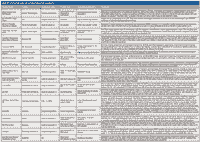
Table III: Chromatography and sample preparation accessories
The technique of dried blood spotting (DBS) has been drawing interest in the pharmaceutical industry for the sampling, storage, and shipping of blood samples for the analysis of drugs and metabolites (6). Basically, small volumes (~15 µL) of blood are spotted on a dried matrix card, the liquid is allowed to evaporate, spots are punched out of the media, and analytes of interest are eluted with solvent and either treated further or directly analyzed by liquid chromatography–tandem mass spectrometry (LC–MS-MS). Because more biofluids (for example, plasma, urine, and cerebrospinal fluid) than blood can be handled with DBS cards, it has been suggested that the technique be referred to as dried matrix spotting (DMS). The cards are deemed safe as not being a biological hazard when blood and body fluids are dried. In addition, analytes are stabilized on the card when dried. The technique saves all the safety and logistics problems of storing and shipping whole blood samples. Products for DBS or DMS were shown at Pittcon, this time including new card formats (Table II) and an instrument that will desorb analytes on-line (Table III).
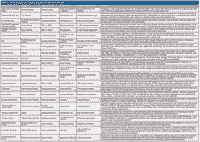
Table III: Chromatography and sample preparation accessories (continued)
The supported liquid extraction (SLE) technique uses small particles of diatomaceous earth packed into a cartridge. An aqueous sample (usually buffered) is applied to the packed cartridge and it distributes itself by capillary action over the sorbent. The high surface area of the sorbent ensures that the sample is finely dispersed. Next, an immiscible organic liquid is percolated through the cartridge and comes in intimate contact with the aqueous sample. A liquid–liquid extraction is performed, just as might occur in a separatory funnel using the two immiscible phases. Because vigorous shaking is not required, there is no chance of an emulsion forming. The organic liquid containing the analyte or analytes of interest is recovered from the cartridge outlet. The analytes can be obtained by evaporation. The entire process is very reminiscent of conventional liquid–liquid extraction, but is much simpler and is performed entirely on-line. New formats of SLE were introduced at the exhibition.
Chromatography and Sample Preparation Accessories
Table III lists 42 new hardware products and accessories for HPLC, GC, capillary electrophoresis (CE), and sample preparation that were introduced at Pittcon 2012. This year, I have extended the columns and sample preparation accessories to include small, benchtop dedicated instruments that are designated to automate sample preparation techniques. All of the products introduced were practical devices designed to make a chromatographer's life easier. I will cover each area individually.
General chromatography products: Several products that are useful for both HPLC or ultrahigh-pressure liquid chromatography (UHPLC) and GC (coupled to MS and MS-MS) were shown this year. Syringe filter configurations are used mostly in LC and occasionally in GC applications and three companies introduced new families of these devices. Thermo Fisher Scientific's Titan3, Target2, and Sterlin syringe filters have various membranes, porosities, and diameters to meet most needs. The Pall syringe filters are ultraclean and are recommended for LC–MS applications. The SGE Analytical syringes are also ultraclean for LC–MS and GC–MS applications. An interesting twist is that they have application-specific needles to cut down on analyte interactions, reduce possible sample loss, and minimize carryover.
In this category, 96-well filtration plates are mostly used for HPLC or UHPLC applications but serve the same purpose as the syringe filters by removing particulates from samples. Filtration plates and spin columns now have established a place in the sample preparation laboratory. Many pharmaceutical companies now use protein crashing rather than SPE for the analysis of drugs and their metabolites in biological fluids, mostly using LC–MS-MS. Acetonitrile or methanol is added to diluted plasma and protein is precipitated, usually in a bead form. The supernatant is filtered and analyzed by LC–MS-MS. Because this type of testing is usually performed on many samples, 96-well filtration plates are the preferred format. Spin columns also perform rapid mechanical filtration, chemical filtration (by the use of adsorbents or molecular weight cut-off membranes), and desalting for small volumes of sample and are convenient when only a few samples need to be prepared. Several companies displayed new spin column formats and 96-well filtration plates.
HPLC, UHPLC, LC–MS, and ion chromatography products: The advent of UHPLC has spurred a number of ultrahigh pressure products. This year, two companies introduced reusuable high-pressure fittings that will go as high as 27,000 psi. A high-pressure injection valve designed for pressures as high as 20,000 psi was shown. Guard columns are always a good idea and two companies introduced high-pressure guard columns, both rated to 20,000 psi, one of which can be vented using a switching valve. The popular sub-2-µm UHPLC columns are particularly susceptible to plugging because of the small porosity frits, so guard columns or in-line filters are almost a must. A safety bottle cap that prevents loss of volatile solvents from solvent reservoir bottles, yet allows air to enter to prevent pump cavitation is a simple but practical device (Figure 2). For anybody who has used trifluoroacetic acid in his or her mobile phase only to find retention times changing because of trifluoroacetic acid evaporation will appreciate such devices.
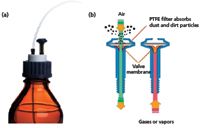
Figure 2
LC–MS-MS systems often use a lot of nitrogen in the 10 L/min range and higher. It is highly impractical to use nitrogen cylinders to provide these high flow rates. Two companies have come out with nitrogen generator systems for LC–MS-MS that generate flows as high as 60 L/min at pressures required for operation.
GC products: This year, only three product offerings strictly for GC were provided. An improved gas-tight syringe for headspace sampling was shown. The syringe features a spring-in plunger that made a tight seal against the glass barrel. Gas-tight connections are always a concern in GC flow systems. A new inert microconnector with low thermal mass for rapid temperature response was introduced. A line of ultra-inert inlet liners was extended by the introduction of a dimpled liner (for cold splitless injection) and a double-taper liner (vapor confined to inside of liner) as indicated in Table III.
Sample preparation products: Sample preparation usually is the most popular area for new accessories, and this year proved to be no exception, with some clever products presented at Pittcon 2012. Almost three-fourths of all new products covered in Table III fit into this area. Small benchtop instruments that automate some of the sample preparation steps can save time, eliminate tedium, and reduce errors. Here, I cover 11 of these benchtop instruments that range from workbench designs that perform multiple sample preparation procedures on small sample volumes to a single task of solvent evaporation. Several of the instruments are capable of automating at least part of the SPE experiment. Two instruments are capable of assisting in pressurized solvent extraction. Shaking centrifuge tubes in QuEChERS is a tedious job, and one instrument automates this process.
The combination of a precision delivery pipetting device and a miniaturized SPE needle is an interesting twist to the SPE experiment of small volumes. As depicted in Figure 3, the eVol-MEPS system from SGE combines the two devices to make a semiautomatic liquid handling–SPE device that performs all steps in the SPE experiment: conditioning, sample loading, washing, and elution. Because the mass of SPE packing is only a few milligrams and the volumes are a few microliters, small-volume cleanup of liquid samples is possible.
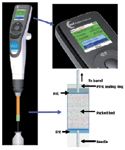
Figure 3
In addition to the DBS cards introduced in Table II, two products for dried blood spotting were shown (Table III). Hand punching of dried blood spots is time consuming and tedious. One product shown at Pittcon was a foot-controlled card punch that will directly insert a punched disk into a 96-well plate (Figure 4); the second product is an automated system that will process as many as 500 DBS cards by providing on-line solvent extraction directly integrated with LC–MS.
Almost anyone who does chromatographic samples uses 2-mL sample vials. Earlier, irregularly shaped vials were often the culprit when shutdown occurred on automated overnight runs or when trace analytes with sensitive compounds were lost. Recently, certified vials that are tested to rigid standards and LC–MS vials with low levels of extractables and inert surfaces have been introduced. At this year's Pittcon, additional high quality and certified vials were introduced by four companies.

Figure 4
Acknowledgment
I would like to thank the manufacturers and distributors that kindly furnished the requested information in advance of Pittcon 2012, thus allowing a timely report on new product introductions. Manufacturers who would like to be considered for inclusion into Pittcon 2013 coverage should send the name of the primary company contact, the mailing address, phone number and e-mail address to Laura Bush, Editor, LCGC North America, lbush@advanstar.com, with the subject line, "Pittcon 2013 Column Watch."
References
(1) R.E. Majors, LCGC No. America 29(3), 218–235 (2011).
(2) R.E. Majors, LCGC No. America 29(4), 300–316 (2011).
(3) R.E. Majors, LCGC No. America 30(1), 20–34 (2012).
(4) R.E. Majors, LCGC No. America 25(5), 436–446 (2007).
(5) S.J. Lehotay, M. Anastassiades, and R.E. Majors, LCGC No. America 28(7), 504–516 (2010).
(6) R.E. Majors, LCGC No. America 29(1), 14–27 (2011).

Ronald E. Majors
Ronald E. Majors
"Column Watch" Editor Ronald E. Majors is a Senior Scientist in the Columns and Supplies Division at Agilent Technologies, Wilmington, Delaware, and is a member of LCGC's editorial advisory board. Direct correspondence about this column via e-mail to lcgcedit@lcgcmag.com
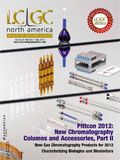
Perspectives in Hydrophobic Interaction Temperature- Responsive Liquid Chromatography (TRLC)
TRLC can obtain separations similar to those of reversed-phase LC while using only water as the mobile phase.






